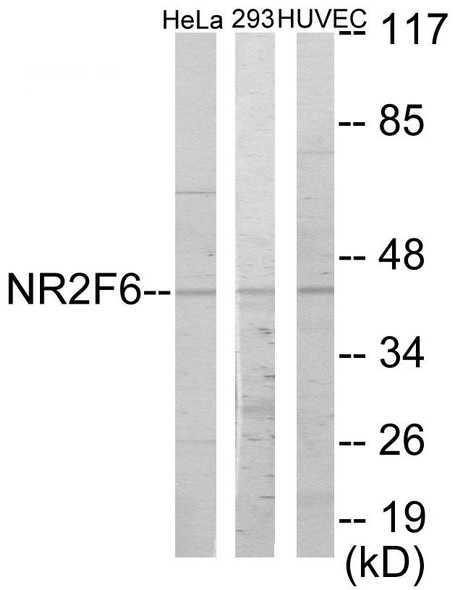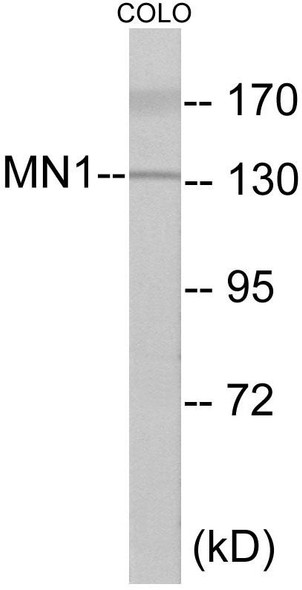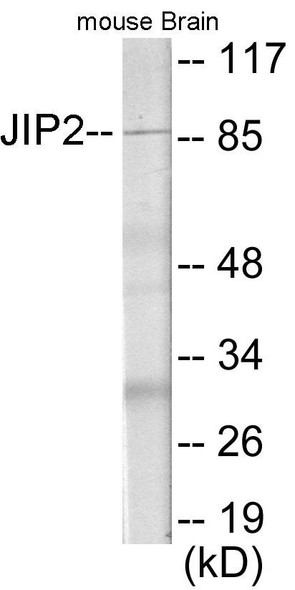Description
SSXT Colorimetric Cell-Based ELISA
The SSXT Colorimetric Cell-Based ELISA kit from Assay Genie is a powerful tool for researchers looking to accurately quantify protein levels in cell culture supernatants. This kit offers high sensitivity and specificity, guaranteeing precise and reliable results for a variety of research applications.Angiogenin is a key player in angiogenesis, the process of blood vessel formation, and has implications in a range of health conditions including cancer, cardiovascular diseases, and neurodegenerative disorders.
By accurately measuring angiogenin levels with the SSXT kit, researchers can gain valuable insights into disease mechanisms and potential therapeutic targets.Whether you're studying cell signaling pathways, drug efficacy, or disease progression, the SSXT Colorimetric Cell-Based ELISA kit is an essential tool for advancing your research. Trust Assay Genie for high-quality, dependable tools to support your scientific endeavors.
| Product Name: | SSXT Colorimetric Cell-Based ELISA |
| Product Code: | CBCAB01108 |
| ELISA Type: | Cell-Based |
| Target: | SSXT |
| Reactivity: | Human, Mouse, Rat |
| Dynamic Range: | > 5000 Cells |
| Detection Method: | Colorimetric 450 nmStorage/Stability:4°C/6 Months |
| Format: | 96-Well Microplate |
The SSXT Colorimetric Cell-Based ELISA Kit is a convenient, lysate-free, high throughput and sensitive assay kit that can detect SSXT protein expression profile in cells. The kit can be used for measuring the relative amounts of SSXT in cultured cells as well as screening for the effects that various treatments, inhibitors (ie siRNA or chemicals), or activators have on SSXT.
Qualitative determination of SSXT concentration is achieved by an indirect ELISA format. In essence, SSXT is captured by SSXT-specific primary antibodies while the HRP-conjugated secondary antibodies bind the Fc region of the primary antibody. Through this binding, the HRP enzyme conjugated to the secondary antibody can catalyze a colorimetric reaction upon substrate addition. Due to the qualitative nature of the Cell-Based ELISA, multiple normalization methods are needed:
| 1. | A monoclonal antibody specific for human GAPDH is included to serve as an internal positive control in normalizing the target absorbance values. |
| 2. | Following the colorimetric measurement of HRP activity via substrate addition, the Crystal Violet whole-cell staining method may be used to determine cell density. After staining, the results can be analysed by normalizing the absorbance values to cell amounts, by which the plating difference can be adjusted. |
| Database Information: | Gene ID: 6760, UniProt ID: Q15532, OMIM: 600192, Unigene: Hs.404263 |
| Gene Symbol: | SSXT |
| Sub Type: | None |
| UniProt Protein Function: | SS18: Appears to function synergistically with RBM14 as a transcriptional coactivator. Isoform 1 and isoform 2 function in nuclear receptor coactivation. Isoform 1 and isoform 2 function in general transcriptional coactivation. A chromosomal aberration involving SS18 may be a cause of synovial sarcoma. Translocation t(X;18)(p11.2;q11.2). The translocation is specifically found in more than 80% of synovial sarcoma. The fusion products SSXT-SSX1 or SSXT-SSX2 are probably responsible for transforming activity. Heterogeneity in the position of the breakpoint can occur (low frequency). Belongs to the SS18 family. 2 isoforms of the human protein are produced by alternative splicing. |
| UniProt Protein Details: | Protein type:Oncoprotein; Transcription, coactivator/corepressor; Nuclear receptor co-regulator Chromosomal Location of Human Ortholog: 18q11.2 Cellular Component: cytoplasmic microtubule; nucleus Molecular Function:protein binding; ligand-dependent nuclear receptor transcription coactivator activity Biological Process: response to drug; transcription, DNA-dependent; cell morphogenesis; ephrin receptor signaling pathway; positive regulation of transcription from RNA polymerase II promoter; microtubule cytoskeleton organization and biogenesis |
| UniProt Code: | Q15532 |
| NCBI GenInfo Identifier: | 20141795 |
| NCBI Gene ID: | 6760 |
| NCBI Accession: | Q15532.3 |
| UniProt Secondary Accession: | Q15532,Q16404, Q4VAX1, Q9BXC6, B0YJ95, |
| UniProt Related Accession: | Q15532 |
| Molecular Weight: | 418 |
| NCBI Full Name: | Protein SSXT |
| NCBI Synonym Full Names: | synovial sarcoma translocation, chromosome 18 |
| NCBI Official Symbol: | SS18 |
| NCBI Official Synonym Symbols: | SYT; SSXT |
| NCBI Protein Information: | protein SSXT; synovial sarcoma, translocated to X chromosome; synovial sarcoma translocated to X chromosome protein |
| UniProt Protein Name: | Protein SSXT |
| UniProt Synonym Protein Names: | Protein SYT; Synovial sarcoma translocated to X chromosome protein |
| Protein Family: | SS18-like protein |
| UniProt Gene Name: | SS18 |
| UniProt Entry Name: | SSXT_HUMAN |
| Component | Quantity |
| 96-Well Cell Culture Clear-Bottom Microplate | 2 plates |
| 10X TBS | 24 mL |
| Quenching Buffer | 24 mL |
| Blocking Buffer | 50 mL |
| 15X Wash Buffer | 50 mL |
| Primary Antibody Diluent | 12 mL |
| 100x Anti-Phospho Target Antibody | 60 µL |
| 100x Anti-Target Antibody | 60 µL |
| Anti-GAPDH Antibody | 60 µL |
| HRP-Conjugated Anti-Rabbit IgG Antibody | 12 mL |
| HRP-Conjugated Anti-Mouse IgG Antibody | 12 mL |
| SDS Solution | 12 mL |
| Stop Solution | 24 mL |
| Ready-to-Use Substrate | 12 mL |
| Crystal Violet Solution | 12 mL |
| Adhesive Plate Seals | 2 seals |
The following materials and/or equipment are NOT provided in this kit but are necessary to successfully conduct the experiment:
- Microplate reader able to measure absorbance at 450 nm and/or 595 nm for Crystal Violet Cell Staining (Optional)
- Micropipettes with capability of measuring volumes ranging from 1 µL to 1 ml
- 37% formaldehyde (Sigma Cat# F-8775) or formaldehyde from other sources
- Squirt bottle, manifold dispenser, multichannel pipette reservoir or automated microplate washer
- Graph paper or computer software capable of generating or displaying logarithmic functions
- Absorbent papers or vacuum aspirator
- Test tubes or microfuge tubes capable of storing ≥1 ml
- Poly-L-Lysine (Sigma Cat# P4832 for suspension cells)
- Orbital shaker (optional)
- Deionized or sterile water
*Note: Protocols are specific to each batch/lot. For the correct instructions please follow the protocol included in your kit.
| Step | Procedure |
| 1. | Seed 200 µL of 20,000 adherent cells in culture medium in each well of a 96-well plate. The plates included in the kit are sterile and treated for cell culture. For suspension cells and loosely attached cells, coat the plates with 100 µL of 10 µg/ml Poly-L-Lysine (not included) to each well of a 96-well plate for 30 minutes at 37°C prior to adding cells. |
| 2. | Incubate the cells for overnight at 37°C, 5% CO2. |
| 3. | Treat the cells as desired. |
| 4. | Remove the cell culture medium and rinse with 200 µL of 1x TBS, twice. |
| 5. | Fix the cells by incubating with 100 µL of Fixing Solution for 20 minutes at room temperature. The 4% formaldehyde is used for adherent cells and 8% formaldehyde is used for suspension cells and loosely attached cells. |
| 6. | Remove the Fixing Solution and wash the plate 3 times with 200 µL 1x Wash Buffer for five minutes each time with gentle shaking on the orbital shaker. The plate can be stored at 4°C for a week. |
| 7. | Add 100 µL of Quenching Buffer and incubate for 20 minutes at room temperature. |
| 8. | Wash the plate 3 times with 1x Wash Buffer for 5 minutes each time. |
| 9. | Add 200 µL of Blocking Buffer and incubate for 1 hour at room temperature. |
| 10. | Wash 3 times with 200 µL of 1x Wash Buffer for 5 minutes each time. |
| 11. | Add 50 µL of 1x primary antibodies (Anti-SSXT Antibody and/or Anti-GAPDH Antibody) to the corresponding wells, cover with Parafilm and incubate for 16 hours (overnight) at 4°C. If the target expression is known to be high, incubate for 2 hours at room temperature. |
| 12. | Wash 3 times with 200 µL of 1x Wash Buffer for 5 minutes each time. |
| 13. | Add 50 µL of 1x secondary antibodies (HRP-Conjugated AntiRabbit IgG Antibody or HRP-Conjugated Anti-Mouse IgG Antibody) to corresponding wells and incubate for 1.5 hours at room temperature. |
| 14. | Wash 3 times with 200 µL of 1x Wash Buffer for 5 minutes each time. |
| 15. | Add 50 µL of Ready-to-Use Substrate to each well and incubate for 30 minutes at room temperature in the dark. |
| 16. | Add 50 µL of Stop Solution to each well and read OD at 450 nm immediately using the microplate reader. |
(Additional Crystal Violet staining may be performed if desired – details of this may be found in the kit technical manual.)






